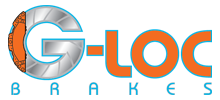1ST TIMERS
Performance Driving Group1st Timers
So you have decided to finally take that step to come out to a race track and see what all the talk is about.
- Now, let’s make sure your car is ready for the track. The single most important part of your checklist is your brakes. It doesn’t matter how new or old your car is, in some cases the brake fluid that comes from the factory may not be adequate for track driving. It is recommended to change the fluid to a high temperature brake fluid but not mandatory. Not a different DOT brake fluid, but a high-performance brake fluid with a boiling point of around 600 degrees. You can get that type of fluid at some parts stores. Brands commonly used are Castrol SRF , Brembo and Motul 600. Your brake pads should have at least 50% wear still left on them as you will be using your brakes often and you don’t want to run out of brakes while on track.
- Your tires should have enough tread on them so you can have good traction, and the tire pressures should be adjusted for track driving. Every car is different, so you should consult your mechanic or friend to help you set the proper air pressures. You should have a tire pressure gauge to help you monitor your tire pressures throughout the day.
- Your wheels must be torqued to the proper setting to prevent a loose wheel from coming off during high speed driving. Only torque your wheels when they are not hot. Once in the morning before going out on your first session is sufficient.
- Your seat belts must be working for both the driver and passenger as you will have an instructor riding along with you during at least your first day to help you learn car control and the proper rules of track driving.
- You will need a helmet, open or closed face, and it must be an SA Snell 2020 certified auto helmet.
- It is recommended that you arrive at the track with a full tank of fuel so it will last you all or most of the day.
- Make sure to check your fluid levels and have them topped off.
- Any loose items in the car should be removed prior to going on track.
- When you get to the track, find a garage to park for the day so you have a place to come back to after every track session and stay out of the weather. Drivers are very friendly and are willing to answer and help you with any questions you have. Arriving early will give you a better choice of parking or garage.
- There are no special requirements for what type of clothing you wear, but you should be comfortable while driving. Shoes are very important, so wear light shoes like sneakers or driving shoes if you have them.
- It is very important to stay hydrated throughout the day. Drink lots of water or/and sports drinks.
- When you see the checkered flag displayed during your session, it means your session has ended and you should use the remainder of the lap you are on as a cool down lap. It is important to allow your brakes to cool down before you exit the track as brake temperatures are very high and could cause small pieces of tire rubber you have picked up on track to catch fire. When you stop at your parking area, do not keep your foot on the brake pedal or use the parking brake. You need to let the brakes cool down before using your parking brake.
- Don’t assume that your insurance policy covers your vehicle for an on-track incident. Read your policy carefully to see if there is an exclusion for this. There are on-track policies available for extra protection. One commonly used by drivers is: https://www.hagerty.com/Insurance/Track-Day-Insurance







